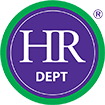So last week we talked about what actions you can take to put your house in order and create the right environment to reduce the incidents of sickness absence in your company. If having done all the things we discussed in Part 1 Putting your house in order and you need some help managing cases of sickness absence, then read on.
1. Have a policy, own it, read it, communicate it and follow it
Most employers these days know that they need to have a policy in place for sickness absence. However, having a generic templated sickness policy that sits in a folder untouched, is neither use nor ornament when it comes to managing sickness absence effectively.
- Own it – Make sure the policy reflects how you want sickness managed in your business (how to report, who to report it to, how and when to keep in touch
- Read it – You cannot effectively manage sickness absence if you don’t know what’s in the policy and why it says what it does.
- Communicate it – Tell staff why it exists, why it’s important, why they should read it and the potential consequences of not complying with it.
- Follow it – Be consistent in following it. Inconsistency risks potential discrimination allegations. Tribunals are not sympathetic to employers who deviate from their own policies.
2. Keep records of all sickness absence
Even if you only have one employee, you need to make a note of their sickness absences: date, time, reason, return date. This information is important for statutory reporting as well as for successful management.
- Speak to the employee- the employee will be able to tell you why they are off, what they are doing to resume fitness for work, the likely duration and any known impacts their absence might have on the business.
- Record the absence – make a note of details, including follow up actions.
- Maintain confidentiality – the rest of the team don’t need to know the reasons for sickness absence. Any notes about the sickness absence should be kept confidential.
- Ensure you receive ‘fit notes from the 8th consecutive day of absence. – regardless of the working patterns. Employees should be made aware of the consequences of not providing timely fit notes.
3. Hold a return to work interview
A return to work interview may range from a quick ‘how are you feeling?’ to a more detailed discussion in a private workspace. These meetings may feel a little daunting especially if you are going to discuss high levels of absence, but they should not be skipped. The great thing about return to work interviews
- You get the opportunity to welcome the employee back, to update them on any workplace matters and to check that they are ok to work
- Shows the employee that their absence was noticed
- Allows you to address informally and at an early stage any issues or concerns arising from the absence and to agree any strategies to prevent further
- Can act as a deterrent if an employee was contemplating taking a ‘sickie’. The prospect of having to have a return to work interview may just make them throw off the duvet, get in the shower and get to work!
4. Monitor sickness levels and act
Don’t let things slide. The primary objective is to get the employee back at work and using their skills and experience to do the job you recruited them for. Don’t let any frustrations you may feel about the situation affect your judgement in managing the absence and return to work.
- Apply standards consistently. If someone has hit the ‘trigger points’ discuss it with them.
- Don’t make assumptions about the genuineness or otherwise of an Remain objective about absences. Assess the available evidence, discuss informally with the employee to get a better sense about the situation.
- Seek medical advice – Ask the employee to agree to referral to an occupational health adviser or GP. They can advise on a medical situation and adjustments you might need to consider making to enable the employee to attend work regularly and perform to satisfactory standards.
- Initiate formal process if necessary – If there is no medical underlying reason for high levels of sickness absence then this could result in disciplinary action and should be managed through the disciplinary policy. If there is a medical reason for absences this can be managed formally through the sickness absence policy.
5. Dealing with Long term sickness
When someone is away from the workplace for 4 weeks or more, this is usually described as long – term absence. These situations are often very difficult and will require careful and sensitive management.
- Focus on getting medical advice to determine the timing and likelihood of a return to work within a reasonable timeframe.
- Where there is a disability – Can reasonable adjustments be made to enable a return to work?
- Consider how long can you continue to sustain the absence. A larger employer may be able to absorb longer term absence than a small employer.
- Meet with the employee to discuss all the potential options – remain positive but realistic about the options. Keep records of meetings/conversations.
Contact Erica at the HR Dept Solihull for advice or support in managing sickness absence. We can prepare letters, attend formal meetings, manage Occupational Health Advisers, coach managers.
Tel: 0121 217 8038 Email: Erica.Burke@hrdept.co.uk
Look out for Part 3 – Managing sickness absence – Presenteeism, and sickness management myth busting
